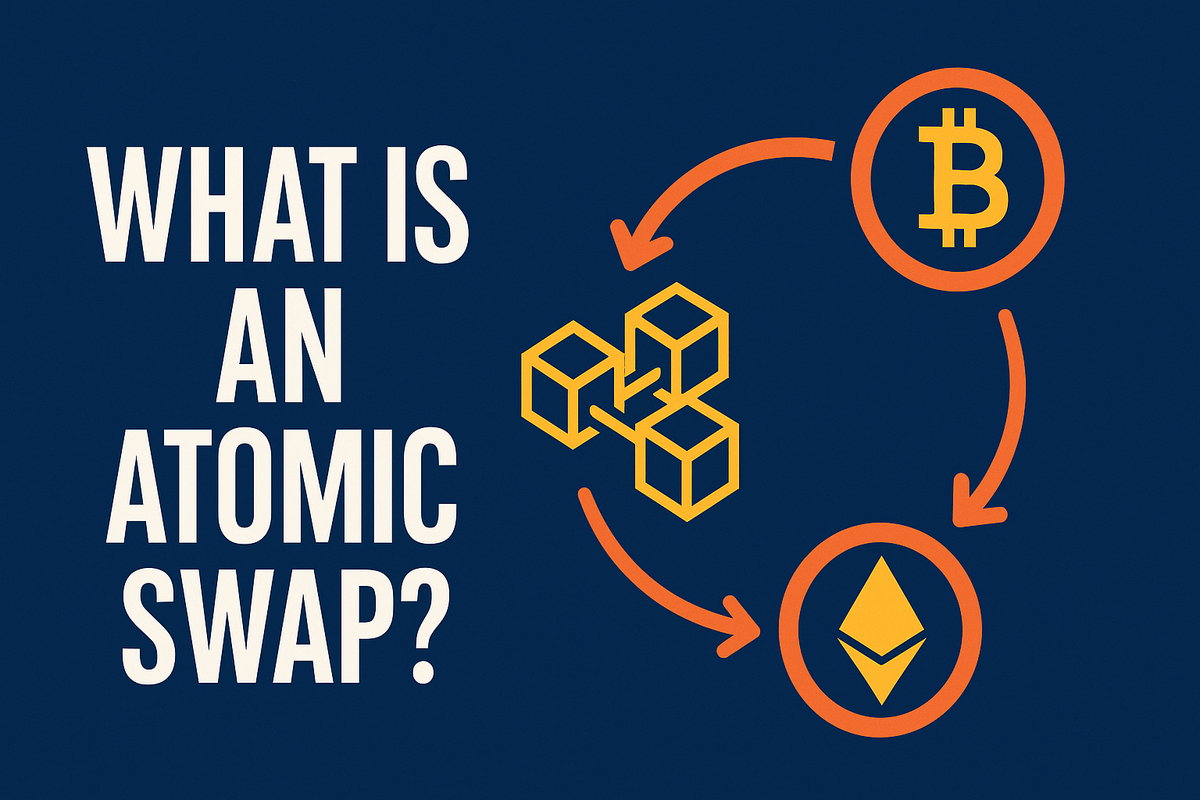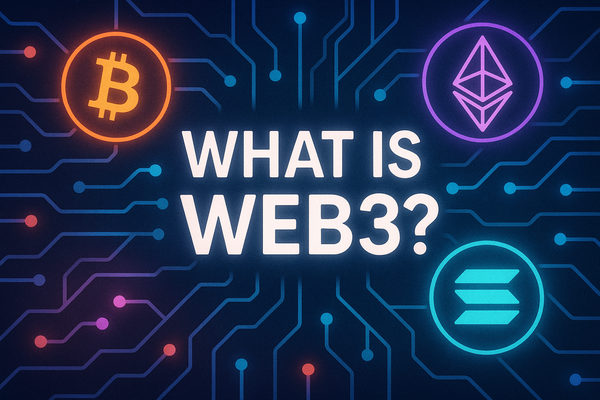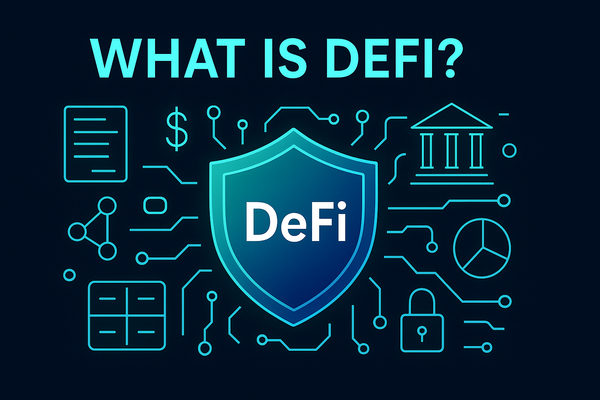What Is an Atomic Swap? A Guide to Trustless Cross-Chain Crypto Trading
Atomic swaps let you trade crypto across blockchains without middlemen. Discover how they work, why they matter, and what’s next for this tech.

In the rapidly evolving world of cryptocurrencies, decentralization remains a core principle. Yet, despite the proliferation of decentralized finance (DeFi) protocols, one major pain point persists: the difficulty of exchanging tokens across different blockchains without relying on centralized exchanges. Enter atomic swaps—a trustless, peer-to-peer method that allows users to trade cryptocurrencies directly across chains.
Atomic swaps represent a major leap forward in blockchain interoperability. They eliminate the need for intermediaries, reduce counterparty risk, and pave the way for a more connected crypto ecosystem. Whether you're a seasoned investor or a DeFi enthusiast, understanding atomic swaps is crucial to grasping the future of decentralized trading.
In this article, we’ll break down what atomic swaps are, how they work, and why they matter. We’ll also explore their benefits, challenges, real-world use cases, and how they compare to other cross-chain solutions. By the end, you'll have a clear, actionable understanding of this powerful technology.
What Is an Atomic Swap?
An atomic swap is a smart contract-based method that enables two users to exchange cryptocurrencies from different blockchains without the need for a trusted third party, like a centralized exchange. The term "atomic" refers to the principle that the swap either happens entirely or not at all—there’s no way for one party to receive funds while the other doesn’t. This all-or-nothing mechanism eliminates counterparty risk.
At its core, an atomic swap uses a combination of cryptographic techniques and time-locked contracts to ensure trustless execution. The most common implementation involves a Hash Time-Locked Contract (HTLC), which locks funds with a cryptographic hash and sets a deadline. If the swap isn’t completed within the time limit, the funds are returned to their original owners.
Atomic swaps can be on-chain (between two separate blockchains like Bitcoin and Litecoin) or off-chain via second-layer solutions like the Lightning Network. Either way, the process ensures that users retain full control of their private keys throughout the transaction.
The primary appeal of atomic swaps is that they embody the decentralization ethos of blockchain technology. They remove the need for centralized intermediaries, reduce fees, and mitigate vulnerabilities associated with exchange hacks and custodial risk.
How Do Atomic Swaps Work?
Atomic swaps rely on a special type of smart contract known as a Hash Time-Locked Contract (HTLC). This contract enforces the rules of the swap, ensuring that either both parties successfully exchange their assets, or neither does. The process involves a cryptographic technique called a hashlock, combined with a timelock for security.
Here’s a simplified example of how an atomic swap works between Alice (who has Bitcoin) and Bob (who has Litecoin):
- Step 1: Secret Generation
Alice generates a random secret (let’s call it "S") and creates a hash of it. She then initiates an HTLC on the Bitcoin blockchain, locking her BTC with the hash of "S". - Step 2: Bob Matches the Contract
Bob sees the hash and creates a corresponding HTLC on the Litecoin blockchain, locking his LTC with the same hash. However, he doesn’t know the actual secret "S"—only its hash. - Step 3: Alice Claims the Litecoin
Alice claims the LTC from Bob’s contract by revealing the secret "S". - Step 4: Bob Uses the Secret
Now that "S" is public, Bob uses it to claim the BTC from Alice’s contract.
If either party fails to complete the transaction within the time limit, the contracts expire and the funds are refunded to their original owners.
The timing is carefully staggered—Alice's contract may have a 48-hour timelock, while Bob’s contract might only allow 24 hours. This ensures that Bob can reclaim his funds if Alice fails to participate after step 2.
By using HTLCs, atomic swaps enforce fairness and prevent fraud, making them a powerful tool for cross-chain trading without centralized custody.
Benefits of Atomic Swaps
Atomic swaps offer several compelling advantages that align with the principles of decentralization and security in the crypto space.
1. Trustless Transactions
The core benefit of atomic swaps is that they remove the need to trust a third party. Trades are governed by smart contracts, which ensure that both sides either complete the transaction or get their funds back—no middleman required.
2. Enhanced Security
By allowing users to retain control of their private keys at all times, atomic swaps significantly reduce the risk of hacks and theft commonly associated with centralized exchanges. There’s no custodial risk because no assets are ever held by an intermediary.
3. Lower Fees
Without intermediaries taking a cut, transaction costs are often lower. Users only pay the standard blockchain fees, avoiding trading fees and withdrawal charges typically imposed by exchanges.
4. Greater Privacy
Atomic swaps can enhance user privacy, especially when performed between blockchains that support privacy features. Since no centralized platform is involved, there’s less data collection and surveillance.
5. Cross-Chain Flexibility
Atomic swaps enable direct exchange between different blockchain networks. This opens up new possibilities for decentralized finance (DeFi) and interoperability, especially as multi-chain ecosystems continue to grow.
These benefits make atomic swaps a powerful tool for users who value sovereignty, privacy, and cost efficiency in their crypto transactions.
Limitations and Challenges
Despite their promise, atomic swaps are not without limitations. Several technical and practical hurdles have slowed their adoption across the broader crypto ecosystem.
1. Technical Complexity
Implementing an atomic swap requires a deep understanding of cryptography and scripting. Both parties must interact with smart contracts and manage hash and time locks correctly, which can be intimidating for non-technical users.
2. Limited Blockchain Support
Not all cryptocurrencies are compatible with atomic swaps. For a swap to work, both blockchains must support the same hashing algorithm (like SHA-256) and time-locked smart contracts. This makes swaps between some assets—especially those without robust scripting capabilities—difficult or impossible.
3. Slow Transaction Speed
Because atomic swaps often occur on-chain, they are subject to the speed and congestion of each underlying network. Waiting for block confirmations can take minutes—or longer—depending on the chains involved.
4. Poor UX and Tooling
Few user-friendly platforms support atomic swaps out of the box. Most implementations require manual setup or command-line tools, creating a barrier to entry for the average user.
5. Lack of Liquidity and Adoption
Compared to centralized and even some decentralized exchanges, atomic swaps suffer from lower liquidity. Without a critical mass of participants, it’s harder to find counterparties, especially for less popular trading pairs.
These challenges underscore the need for improved interfaces, broader blockchain support, and greater education before atomic swaps can achieve mainstream adoption.
Atomic Swaps vs. Cross-Chain Bridges
Both atomic swaps and cross-chain bridges aim to solve the problem of interoperability between blockchains—but they do so in very different ways.
Atomic swaps enable direct, peer-to-peer exchanges without requiring a third party or a wrapped asset. They rely on smart contracts (like HTLCs) and are inherently trustless. Each user retains control of their private keys throughout the process, making atomic swaps highly secure and decentralized.
In contrast, cross-chain bridges usually involve locking tokens on one chain and issuing synthetic or "wrapped" versions on another. These bridges are often operated by centralized or semi-centralized entities and come with additional risks, including bridge hacks, smart contract vulnerabilities, and custodial failures.
While bridges generally offer greater flexibility and faster transaction times, they also increase systemic risk. Atomic swaps, on the other hand, prioritize security and decentralization, though at the cost of usability and scalability.
Ultimately, the choice depends on the user’s priorities. If trust minimization and custody-free trading are essential, atomic swaps are the better fit. If speed and convenience matter more, bridges may offer a more practical solution—for now.
Real-World Applications and Examples
Though still a developing technology, atomic swaps have already been implemented in various real-world scenarios, especially in early decentralized exchange (DEX) experiments and privacy-focused projects.
One of the earliest notable demonstrations occurred in 2017, when developers conducted a successful atomic swap between Bitcoin and Litecoin. This milestone proved the feasibility of cross-chain trading without intermediaries and sparked interest in building more robust implementations.
Projects like Komodo and Decred have integrated atomic swap functionality into their platforms, allowing users to trade directly across chains without giving up custody. Similarly, AtomicDEX (developed by Komodo) offers a graphical interface that supports atomic swaps between several cryptocurrencies, aiming to make the process more accessible.
Atomic swaps also hold significant potential for decentralized OTC trades, where large trades can be executed peer-to-peer without going through an exchange. They’re also being explored in Lightning Network integrations, allowing near-instant swaps with minimal fees.
While still relatively niche, these use cases demonstrate that atomic swaps are more than theoretical—they're a working solution for real-world interoperability problems. As tools and standards mature, adoption could expand significantly.
Future Outlook
Atomic swaps represent a foundational technology in the broader push toward blockchain interoperability. While still in the early stages of adoption, their potential to reshape how crypto assets are exchanged is undeniable.
As the DeFi ecosystem continues to mature, there’s growing demand for trustless, cross-chain trading solutions. Atomic swaps fit that need, especially as users seek alternatives to centralized exchanges and bridge protocols, which have been frequent targets of security breaches.
Future advancements in user experience—such as intuitive wallets and simplified interfaces—could lower the technical barrier to entry, making atomic swaps more accessible to everyday users. In addition, improved compatibility across chains, standardized protocols, and second-layer enhancements (like Lightning or rollups) may help atomic swaps scale more efficiently.
Regulatory clarity may also influence adoption. As scrutiny over custodial platforms increases, non-custodial trading solutions like atomic swaps could gain favor among privacy-conscious users and developers.
While atomic swaps may not replace every form of cross-chain interaction, they’re poised to play a key role in the decentralized financial stack. If the technical and UX challenges are addressed, atomic swaps could become a standard feature of future crypto wallets and decentralized exchanges.
What Is an Atomic Swap? FAQ
An atomic swap is a trustless way to exchange cryptocurrencies from different blockchains without using a centralized exchange. It ensures that either both parties complete the trade or neither does.
Atomic swaps use Hash Time-Locked Contracts (HTLCs), which lock funds with a secret hash and return them if the trade isn’t completed in time. This ensures a secure, trustless exchange.
No, but both blockchains must support hash functions and time-locked transactions. Full smart contract capabilities aren’t always required, but scriptability is essential.
Technical complexity, slow transaction times, and limited coin compatibility are current challenges. Poor user interfaces can also make them hard for beginners to use safely.
Generally, no. Atomic swaps occur on-chain and require confirmations, which can be slower. Bridges often offer faster transactions but involve custodial or smart contract risk.
Some wallets, like AtomicDEX, support atomic swaps. However, many mainstream wallets do not yet offer this feature due to its technical requirements.
Coins like Bitcoin, Litecoin, Decred, and Komodo are commonly used. Compatibility depends on whether the coin supports hashed time locks and scripting features.
They could play a major role in cross-chain DeFi, especially if usability improves. However, they may coexist with other solutions like bridges and DEX aggregators.





